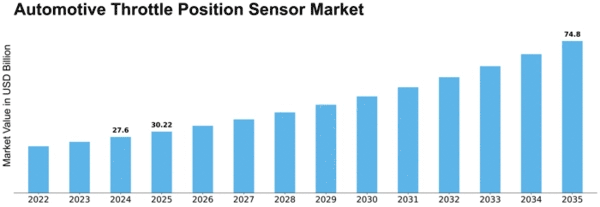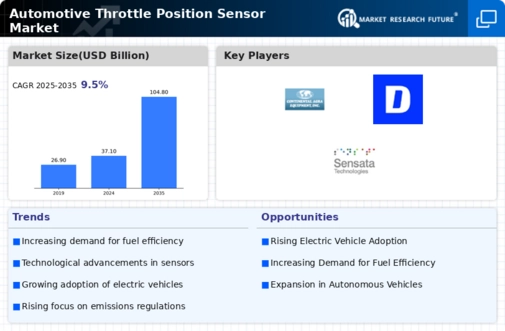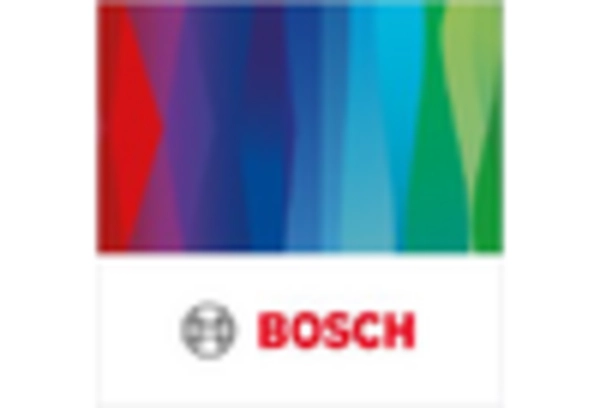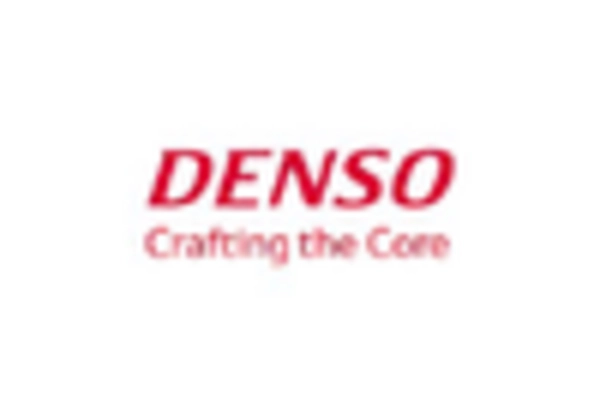Automotive Throttle Position Sensor Size
Automotive Throttle Position Sensor Market Growth Projections and Opportunities
The automotive throttle position sensor (TPS) market is in an evolving and revolutionizing trouble, fueled by a diverse set of factors that fundamentally change the outlook of the market. Fuel efficiency and emissions reduction which are gaining importance in the automotive industry is one of the main engines which shape this trend. As members of the global society the automakers are responding with greater emphasis to environmental standards integration, including advanced TPS technologies for facilitating precise throttle control, fuel combustion optimization, and the reduction of environmental challenges. Fuel-saving vehicles, in particular, propels the growth of automotive TPS market, as the sensors contribute greatly to the mixture maintenance for burning of homogeneous air-fuel mixture.
Automotive TPS market derives its distinct dynamics from the ongoing technological advancements. Current TPS systems are equipped with sophisticated sensors like Hall-effect, for instance, and potentiometer-based systems; they are capable of sending a instantaneous feedbacks about the position of the throttle to ECU. This becomes a source for exact control of mixture and injection time parameters in turn allows for maximum performance and economy. As the conduction of electronic throttle control (ETC), which manipulation most involve TPS inputs, replaced the old mechanical linkages, the expectancy of improved responsiveness and efficiency could be achieved in newer vehicles, thus proving clearly a positive attribute for a race car
Governments role and emission directives which are the key elements in the structure of automotive TPS market are mandatory. Countries from all over the world are imposing tougher emission standards due to environmental issues. OEMs mandatorily need to apply TPS technologies among other advancements in order to meet the regulatory requirements. Improved aerodynamic slippery and more fuel efficient fleet demand particular attention to be given on the task of implementing sensors that ultimately bring about reduced carbon emissions and higher overall engine efficiency.
Outside of this, the ever-increasing trend towards electric and hybrid vehicles is one of the key factors that also act on the market. Unlike normal vehicles, these vehicles normally utilize electric power for movement but they also contain internal engine, which is distributed with the added power of TPS. The TPS in a hybrid powertrain integrates flawlessly so switching between electric and IC modes are easy. This actually increases the efficiency and the performance of cars for the hybrid vehicle.
Besides global economic variables such as consumers buying ability and the level of transformation and competition in the automotive industry, economic dynamics is one of the main factors that drive the market growth for Automotive TPS. Growths or recessions may impact consumer tastes and thus create change in the consumer market which subsequently can reduce vehicle demand and production rate. However, during the economic expansion male consumers do the bulk of the purchasing out of demand factors, and the greater sale and manufacture of the TPS units is caused as they are the fundamental patents for the design of the modern automobiles.


















Leave a Comment